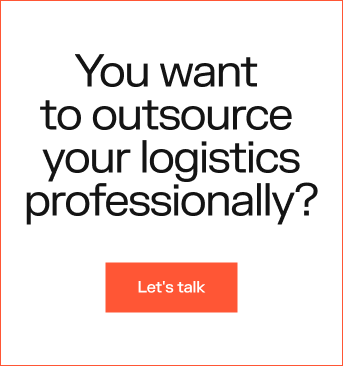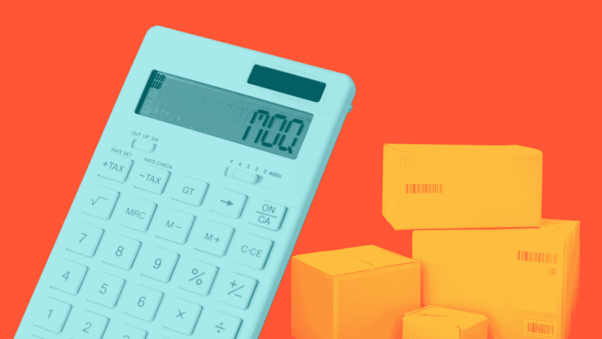What Is Amazon FBA? Is It Still Worth It in 2025? All Information on Costs, Benefits and Alternatives
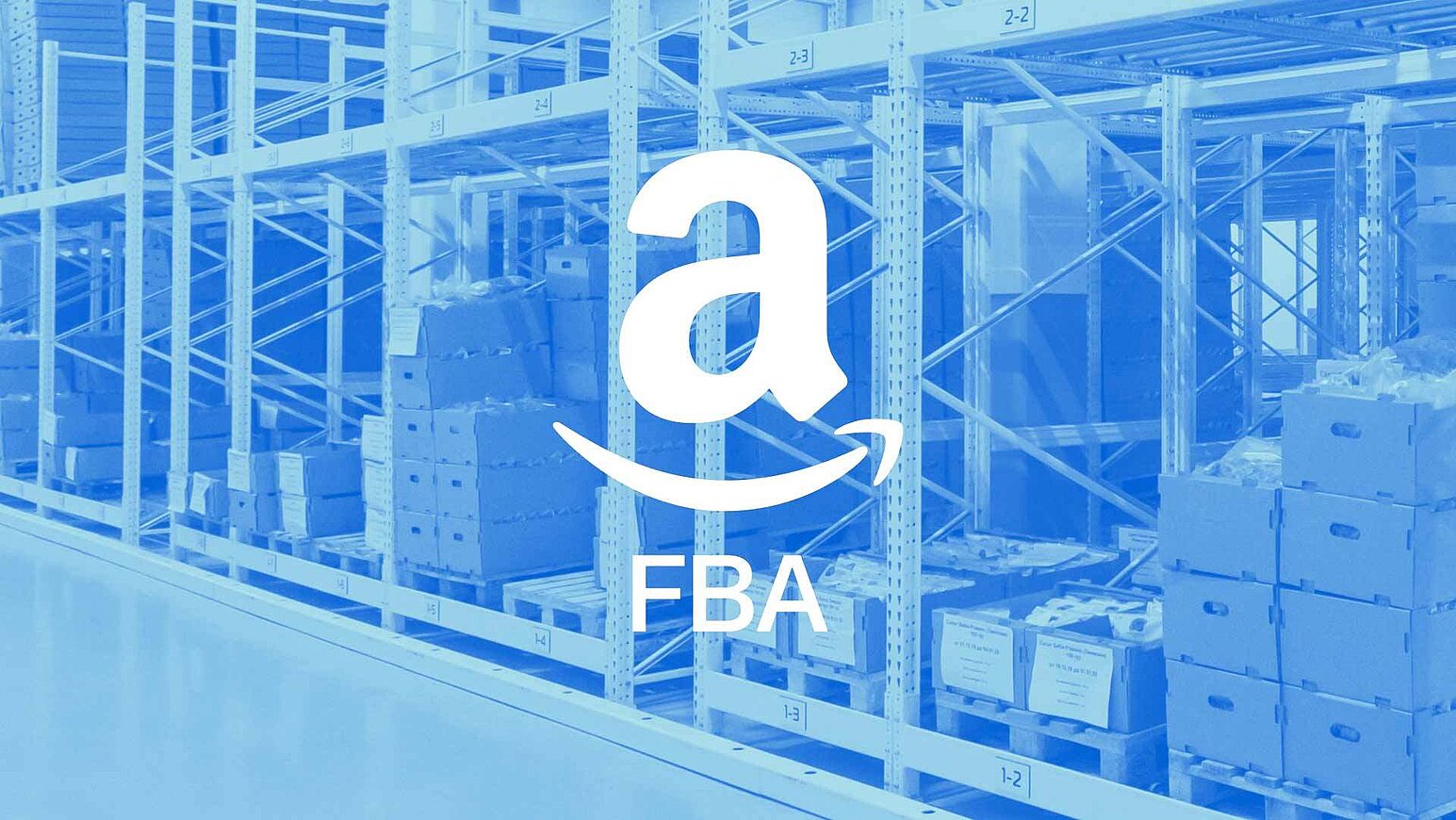
Amazon FBA, also known as “Fulfilment by Amazon”, is a popular business model for many sellers. But is Amazon FBA still worth it in the UK and can you still make real money with it?
In this guide you will get everything you need to know: You will learn about the pros and cons, the costs involved and how the whole system actually works. You will also see how to cut down on fees, how much starting capital you should expect to invest in the UK and what alternatives there are to Amazons fulfilment service.
If you want to know whether FBA is a smart move for your business in the UK, you will find the answers right here. Let’s get started.
FBA = Fulfilment by Amazon explained quickly and simply
The 6 key questions about FBA at a glance
- What is FBA? FBA stands for Fulfilment by Amazon. It is a service that lets sellers hand over their entire logistics to Amazon. This includes storage, shipping, returns and customer support, all without ever touching the products yourself.
- How does FBA work? You send your stock to an Amazon fulfilment centre in the UK. Whenever an order comes in, Amazon handles the packing, shipping and returns process for you.
- How much does FBA cost? FBA fees in the UK depend on the size and weight of your product as well as how long it stays in storage. Amazon charges several different fees. They earn a cut on every sale and you also pay for storage, handling, picking, packing, shipping and, if items sit too long, long term storage.
- What is the difference compared to doing your own fulfilment? With your own logistics you manage everything from storage to shipping. With FBA Amazon takes over the entire process the moment your stock arrives at their fulfilment centre.
- Benefits of FBA? Your products qualify for Prime which boosts visibility and removes delivery costs for Prime customers. Amazon also provides professional customer service in the UK and handles returns smoothly for buyers.
- Downsides of FBA? You lose some brand presence because everything ships in Amazon packaging. Storage fees can become expensive over time. Sellers also report occasional issues with picking mistakes and products being damaged or going missing inside the warehouses.
What is Amazon FBA?
Amazons FBA (Fulfilment by Amazon) is a service from the global ecommerce giant that lets sellers offer their products on the Amazon marketplace while Amazon takes care of storage, packing, shipping and customer support.
FBA gives small and medium sized businesses access to a worldwide audience and to Amazons top tier logistics network. You send your products to a UK fulfilment centre where they stay until they are sold. When an order comes in Amazon handles everything from picking and packing to delivery and customer service.
FBA makes it much easier to scale your online business while keeping your workload low. By outsourcing your logistics you avoid the cost of running your own warehouse or hiring staff and Amazons fulfilment centres take care of the entire order and delivery process for you.
Amazon itself has provided a clear video that shows you in 2 minutes what Amazon FBA is.
The latest updates to Amazon FBA for 2025
Here are the most important changes and developments coming for FBA sellers in the UK in 2025:
1. Fee reductions and new fee structures in the UK
- From February 2025 Amazon UK has lowered several fulfilment fees and simplified the whole structure to make cost planning easier. The biggest improvements affect standard parcels and most oversized items, which now fall into fewer size tiers. A new base-fee-plus-per-kilogram model also makes it easier to calculate your margins accurately.
- Sellers with lightweight products benefit from the new small envelope category because fees now depend more on weight, not just size. This is great for beauty items, small electronics, supplements and stationery, which often suffered from oversized charges before.
• Lower fulfilment fees for many parcel and oversized items
• Fewer oversized size tiers to reduce confusion
• New base fee plus per-kilogram charge for clearer calculations
• New small envelope category for cheaper fees on lightweight products
2. Growing relevance of alternatives to FBA in the UK
- FBA is still the go-to option for most UK sellers thanks to Prime delivery and Amazon’s strong infrastructure, but more brands are exploring additional fulfilment options to reduce costs or keep more control. UK-based 3PL providers like Quivo are becoming more popular because they often offer flexible pricing, branded packaging and easier stock management.
- Using an external fulfilment partner alongside FBA can also protect your business from disruptions such as inbound delays or high storage fees for slow-moving items. Many sellers now run a hybrid setup: long-term storage and prep work with a 3PL, fast-moving units inside FBA.
• UK 3PLs often offer lower storage costs and more flexibility
• Useful for branded packaging or customised unboxing experiences
• Protects your business from FBA delays or check-in issues
• Hybrid systems reduce long-term storage fees and improve stock flow
• Makes it easier to sell on multiple channels like Shopify, TikTok Shop or eBay
3. Updated Brand Registry tools for UK sellers
- Amazon has improved its Brand Registry system in the UK to give brand owners more protection and better control over their listings. Registration is free for UK trademark holders and once you’re in you gain access to several tools that help keep your brand safe and present your products more professionally.
- The updated system offers stronger automated monitoring against counterfeits and unauthorised sellers. It also unlocks premium features like A+ Content and Sponsored Brands which help your listings stand out, convert better and look more polished.
• Free Brand Registry access for UK trademark owners
• Access to A+ Content and Sponsored Brands for higher conversion
• Better analytics for tracking your brand’s performance
• Easier listing control to ensure your products appear correctly
4. Market developments: competition keeps rising
- The UK market is still attractive for Amazon sellers but the level of competition continues to grow. More third-party sellers are entering the platform each year and many lean heavily on FBA which raises the bar for product quality, branding and pricing.
- Generic products feel the pressure the most, which is why UK sellers are increasingly focusing on niche products or strong branding. Private label brands with clear positioning and quality presentation generally perform better than unbranded or generic listings.
• FBA continues to be heavily used by successful sellers
• Niche products and strong branding perform noticeably better
• Quality listings with clear USPs have a higher chance to win ranking
5. AI tools and new technology trends on Amazon
- Amazon is investing heavily in AI tools designed to help sellers improve their listings and boost visibility in search results. These tools analyse product descriptions, titles and keywords and can suggest improvements based on real customer search behaviour.
- 3D product views and early AR features are also being rolled out gradually in the UK. Although still limited to certain categories they help customers interact with products more realistically which can lead to better conversion rates. Sellers can already upload interactive 3D models for many products.
• Amazon’s AI tools help optimise listings and keyword usage
• Gradual rollout of 3D product views and AR features in the UK
• Higher customer engagement with interactive product models
These 2025 updates show that Amazon is still investing strongly in its platform, but at the same time the competition for UK sellers is getting tougher. Keep an eye on Amazon’s new tools, review your product and packaging strategy and make sure you stay ahead of the changes:
How to get started with Amazon FBA in three steps:
- Register online in the Seller Center as an FBA merchant,
- List your products,
- and send them to Amazon's fulfilment centres.
Amazon will store your items and automatically take care of all incoming orders. Your job is to market your products on the sales platform and keep Amazon's inventory well stocked.
How much money do I need to start successfully with Amazon FBA?
The amount of Amazon FBA start-up capital you need depends on the size of your business and the products you want to sell. In the following section you will find general information about the costs and fees for Amazon's FBA service.
- We recommend a minimum of £5,000 in start-up capital if you want to enter the Amazon business as a growing company and aim for long-term profitability. This amount also includes various overhead costs that you should consider.
Expenses other than Amazon FBA fees include:
- Business registration (varies)
• Depends on your structure in the UK (sole trader, partnership or limited company)
• Registration as a sole trader is free, setting up a Ltd usually costs a small Companies House fee - Registration as a "Professional" seller in the Amazon Seller Account
• £25 per month plus VAT
• Makes sense if you sell more than roughly 35 units per month
• Otherwise the Individual plan charges £0.75 per sale - Marketing costs (varies, approx. >10% of the value of goods at the beginning)
• Early-stage advertising on Amazon UK often ranges between 10% and 20% of product value
• Stronger niches may require higher PPC spend to rank early
• Additional costs possible for influencers, off-Amazon ads or external traffic - Costs for products, orders, shipping to Amazon and customs fees (varies greatly depending on the product)
• Includes manufacturing costs, MOQs, packaging and branding
• Shipping to UK fulfilment centres can vary widely depending on size, weight and Incoterms
• Customs duties depend on product type and country of origin - Application for barcodes and EORI/EAN number for product identification and customs clearance (varies)
• EORI number in the UK is free when applying through HMRC
• Barcodes (EAN/UPC) must be purchased from GS1 UK or authorised resellers
• Costs vary depending on the number of barcodes and membership structure - Possible import VAT depending on product and applicable law in your country
• Standard UK VAT rate is 20% on most imported goods
• Import duty depends on the exact product category
• VAT-registered sellers can usually reclaim Import VAT in their VAT return
In addition, there are other running costs for your Amazon business, such as:
- Accounting
- Product photos
- Employees
- Licenses
- Certificates
- Sample products
- Amazon Seller Tools
- Flyers and other promotional material
- Trademark application
How does Amazon FBA work?
As soon as a customer places an order the product is automatically registered in the system and taken out of your seller inventory. Amazon handles the entire process including returns and customer support.
This means you can focus on product development and growing your business while Amazon takes care of the logistics and keeps everything running smoothly.
This is how things usually work with Amazon:
- You send your products to an Amazon fulfilment centre
- … they store your stock in the warehouse.
- As soon as customers buy your items on Amazon
- … Amazon automatically picks, packs and ships the parcels and handles the whole process including invoicing.
- Amazon also takes care of customer service if there are any issues
- … and processes all returns for you.
- Every two weeks Amazon transfers your collected payouts to your bank account.
In the video: A quick overview, how Amzon's FBA programme works and what you need to do.
Obviously, Amazon doesn't do this for free. Various fees apply depending on quantity, size and weight. You pay a certain amount for storage fees and shipping costs. However, the shipping costs are relatively cheap, since Amazon, as the world's largest shipping platform, has negotiated specific contracts with most shipping service providers.
The costs of Amazon FBA 2025: start-up capital, profitability and the latest updates
Important note up front: The costs for Amazon FBA vary and depend on several factors, including the size and weight of your products, how long they stay in storage and the speed of shipping.
In general, the following Amazon FBA fees apply:
- Amazon Seller Account: You pay £25 per month plus VAT for your Professional seller account on Amazon UK.
- Referral fees: These usually range between 8 percent and 15 percent depending on your category.
- Storage fees: These vary based on product size, weight and season. Keeping an eye on dimensions and weight is important because both affect your monthly storage costs.
- Fulfilment fees: These depend on size and weight and include picking, packing and shipping.
- Refund administration fees: If a return happens Amazon keeps the lower amount of either £5 or 20 percent of the original referral fee.
- Additional service fees: Extra fees may apply for certain categories or optional services such as labelling or product preparation.
The main costs come from storage fees which depend on how many items you hold and how large they are plus the fulfilment fees for shipping and packing.
Additional costs may arise from optional services such as labelling, prep work or removal orders. Your required start-up capital for Amazon FBA also varies widely. It includes sourcing your products, shipping them to Amazon’s UK fulfilment centres, your initial FBA fees and your marketing budget. Careful planning is essential because your early investment sets the foundation for future growth.
The Latest Adjustments to Amazon FBA Fees
From 2025 Amazon is rolling out several changes to its FBA fee structure that matter for sellers in the UK and across Europe. Here’s a clear overview of what actually changes:
- The fulfilment fee structure for parcels and oversized items has been updated. The number of size tiers for oversized products has been reduced, making the system simpler and the calculations more predictable.
- A base fee combined with an additional per-kilogram charge is being introduced for certain size groups. This makes the overall pricing model easier to understand and plan around.
- A new category for small and lightweight envelopes is being introduced. This category uses a weight-based fee structure which helps sellers with smaller products calculate their margins more accurately.
- While some oversize fees are being lowered due to the simplified tiers, sellers should be aware that not all fulfilment fees are decreasing. Certain standard-size categories in the UK have seen slight fee increases for 2025.
- Overall Amazon’s updates aim to make fulfilment fees more transparent, especially for heavy or bulky items, by reducing the number of size tiers and using clearer weight steps.
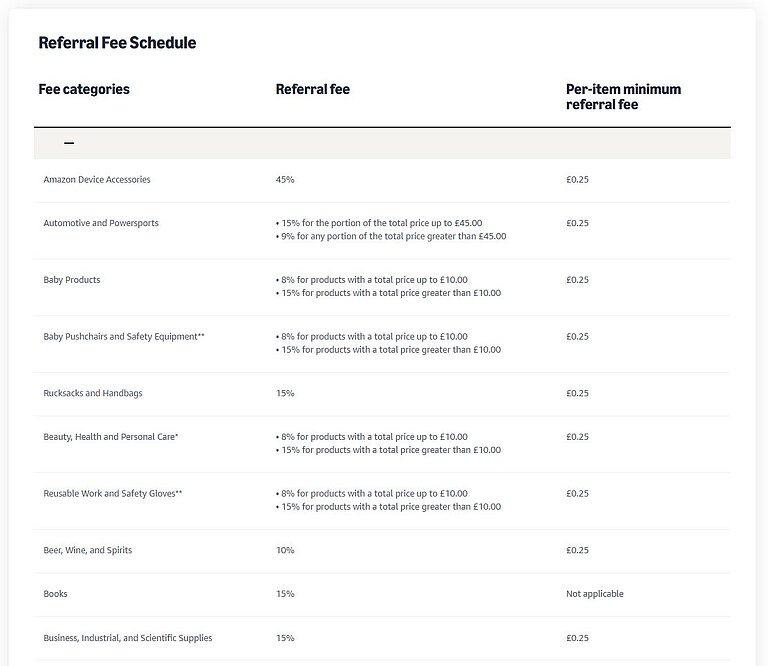
All costs with all Amazon FBA fees can be found
- here in the cost breakdown of your seller account at Amazon.
It is important to take these costs into account when pricing your products.
Important to know: If you ship your products via Amazon FBM (Fulfilment by Merchant), the storage and shipping fees are waived because you take over these tasks yourself or entrust them to a fulfilment company of your choice - such as Quivo.
How to save on Amazon FBA fees
To minimise your Amazon FBA fees, you basically have several options:
- Storage: In order to minimise inventory and thus reduce Amazon storage fees, you can use your own warehouses or interim storage facilities, which can be significantly cheaper. Especially with larger products, this can lead to considerable savings and you can still take advantage of Amazon's FBA service.
- Pricing: You can influence your profit margin, and therefore the fees charged, by adjusting the selling price of your product accordingly. Strategic pricing can reduce the impact of FBA fees.
- Packaging: Compact and effective packaging of your products will result in them falling into a lower shipping category, resulting in lower shipping costs. By optimising Amazon packaging, you can both improve customer engagement and reduce your costs.
- Product optimisation: By constantly optimising your products, you contribute to continuously reducing your costs. This can be done, for example, by finding cheaper suppliers, improving product quality or using cheaper materials or production methods.
- Sales optimisation: By increasing your sales figures, you can reduce the FBA fees in relation to your turnover. Invest in targeted marketing and optimise your listing to reach more potential Amazon buyers and increase your sales opportunities.
Amazon FBA UK Revenue Calculator
Before starting your Amazon business, make sure you do a thorough calculation of the costs!
- Use either the official calculator in Amazon's Seller Central or one of the many FBA calculators available from other providers on the internet.
An accurate cost analysis will allow you to identify potential savings and create a solid foundation for your pricing and business strategy!
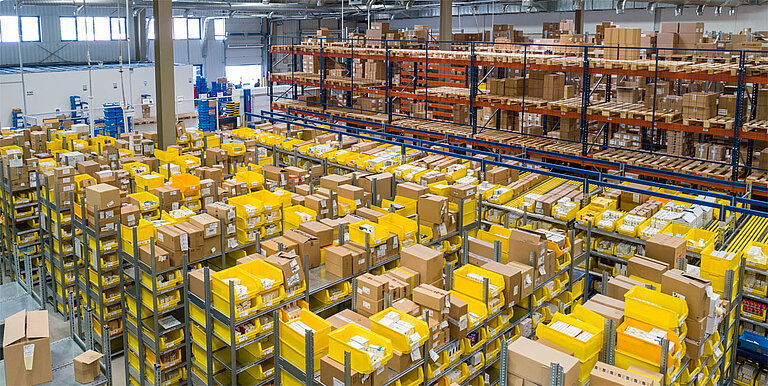
The advantages of Amazon FBA:
Extended Reach and Visibility:
- Access to a huge customer base: Amazon FBA gives businesses the chance to benefit from Amazons massive reach and connect with millions of customers worldwide.
- Increased visibility on the Amazon platform: Products fulfilled through FBA often appear higher in search results and qualify for Prime delivery which boosts visibility and makes them more appealing to Prime customers.
Simplified Logistics and Fulfilment:
- Storage and shipping handled by Amazon: Amazon takes care of all storage, picking, packing and shipping which massively reduces the logistical workload for your business.
- Business scalability: Companies can scale more easily because they use Amazons fulfilment capacity and infrastructure which is especially useful for brands with seasonal demand.
Improved Customer Support:
- Reliable customer service and returns: Amazon provides professional customer support and efficient returns handling which can lead to higher customer satisfaction and stronger customer loyalty.
International Selling:
- Easy access to international markets: With Amazon FBA businesses can expand into new markets more easily since Amazon supports the international logistics and customer service.
Cost and Time Efficiency:
- Reduced operational costs: Outsourcing storage and fulfilment to Amazon can reduce operational expenses.
- Time savings: Businesses save time on order processing and can focus more on other areas such as product development and marketing.
The disadvantages of Amazon FBA:
No two companies are the same and requirements can vary greatly. Here are some of the most common disadvantages of Fulfilment by Amazon:
- Storage at Amazon:
Like most fulfilment providers, Amazon doesn't like it when there's too little movement in their warehouses. If products sit unsold for too long, storage fees become more expensive. It is important to note this and, if necessary, to calculate it – or you monitor your stock continuously and precisely so that your storage costs do not get out of hand.
You must also ensure that the products you sell through Amazon meet a precise list of requirements in order to even be accepted into the FBA program. Depending on the product type, some of these can be difficult for sellers to fulfil.
You can find the exact product requirements for Fulfilment by Amazon - here.
- The cost of FBA:
How much does Amazon FBA cost? The service has many great advantages, but they don't come for free. For start-ups and smaller companies with less capital, fulfilment with Amazon may not pay off in the end due to various fees. Sending cheap items via Amazon can be expensive, because the storage costs can be high. If the products are also big and heavy, your profit will melt away.
In addition, Amazon prioritizes the payment of its outstanding fees over your business. So you cannot use the incoming sales to settle any outstanding debts with Amazon, but must always remain liquid so that your fulfilment continues unhindered.
Amazon offers a handy FBA calculator for this, so that you can find out if it's worth shipping through them.
- Returns processing:
It is often reported that, due to Amazon's flexible return policy, product returns are increasing. Although Amazon takes care of the logistical processing, sellers assume the costs for damaged returns, which can have a negative impact on your profit. You have no influence on which returns are accepted and which are not.
- Competition, identity and customer loyalty:
The number of potential customers on the world's largest sales platform is obviously enormous – but so is the competition! You should invest heavily in your marketing and present your products in the best possible way so that they have a chance to be seen and bought on Amazon.
There is almost no customer loyalty through Amazon's FBA program, because the items are bought "via Amazon" and the packages are branded accordingly. Of course, your products are still included, but Amazon is always named as the contact point, which reduces the recognizability of your company.
The fact that Amazon provides you with comprehensive customer service is definitely a huge relief for your day-to-day business. Amazon is also very accommodating in its replies to inquiries, which makes it extremely popular with customers around the world. However, since their service employees often answer inquiries for different retailers, there is little direct feedback – which also affects customer loyalty and reduces the awareness of your business.
- Would you like to have your fulfilment in your own hands in the future? We can help you with this. Without commitment, fixed costs or minimum volume. Simply send us a message.
Amazon FBA alternatives:

Regardless of the pros and cons of Amazon FBA, one thing is clear: you are handing over an important part of your business to Amazon and are dependent on their processes and fees. That is why many sellers are looking for alternatives to the FBA model without giving up their Amazon customer base and the Prime label.
As an e-commerce retailer, you can position yourself more broadly, become more independent and build better customer loyalty through more branding options.
As a retailer, you have one great FBA alternative to sell your goods on Amazon
FBM – Fulfilment by Merchant:
- You sell your products via Amazon, but take care of storage, shipping and returns processing yourself, or hand over your logistics to an external fulfilment provider like Quivo.
The advantage of FBM is that you get the opportunity to design your packages the way you want. Many fulfilment providers like us also enable the targeted branding of your parcels and are Amazon Prime certified.
This way you can reach your customers personally and directly, strengthening your brand.
In addition, there are fewer restrictions and fees, and we are usually more flexible than Amazon, especially when it comes to storage space, because you only pay for the space you currently use. We can also keep the warehouses stocked for multi-channel fulfilment customers who use Amazon's FBA service in addition to FBM through us.
Conclusion: Is Amazon FBA still worthwhile in 2025?
Amazon FBA will still be an exciting way to build your own business in 2025, but it’s no longer something that runs itself. The market keeps growing, yet the competition is getting tougher as well. To succeed you need a clear strategy, high quality products and solid marketing know-how.
FBA fees continue to rise and more sellers are looking for alternatives or combining FBA with their own logistics. Even so Amazon’s reach and infrastructure offer huge advantages that very few marketplaces can match at this scale.
In short, FBA is still worth it, but not for everyone. If you jump in without proper product research or a realistic cost calculation you risk losing money. With well planned strategy and real value for customers FBA can still be profitable in 2025.
- If you would like to outsource your logistics professionally, you can find out everything you need to know about our fulfilment services in the UK here. Simply send us a message with no obligation!
Sources
- The exact data might change, mistakes could occur. Please check the official websites for detailed current info. Information on fees and costs of FBA among others from Amazon.com Seller Central documentation - as of November 2025.
Page: sellercentral.amazon.com
Page: The Pros And Cons of Joining the Amazon FBA program
URL: sellerinteractive.com
Page: Amazon's FBA shipping service: advantages and disadvantages for retailers
URL: www.ecosistant.eu
Amazon © YouTube Channel
Amazon Seller Central UK and US Pricing Pages
Picture sources:
Quivo © 2025; Amazon, pixabay, Wikipedia



